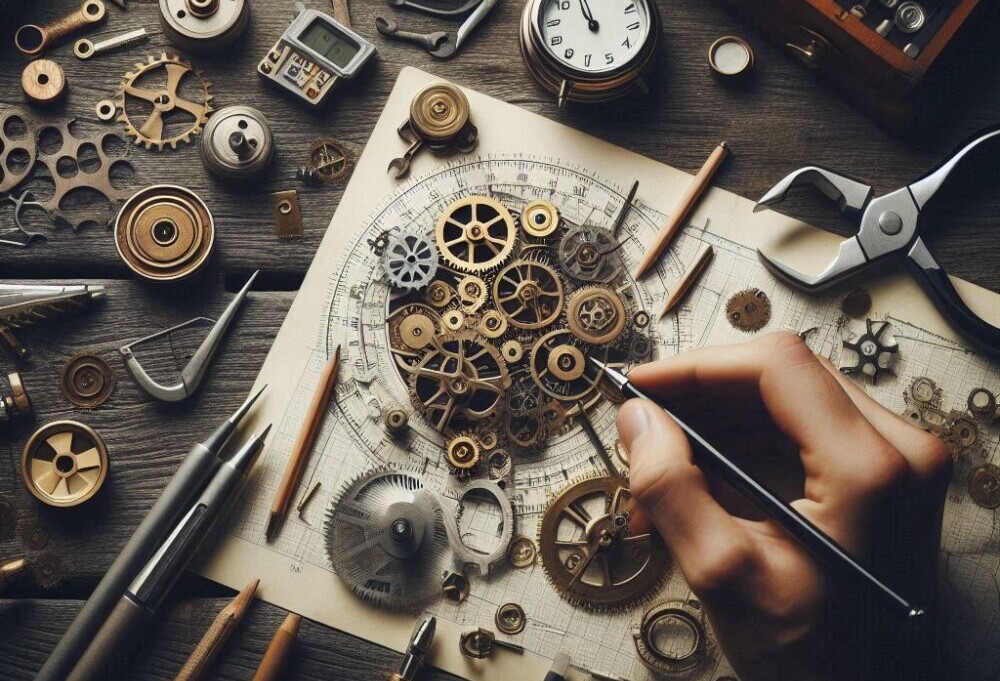Building a wooden clock can be an incredibly rewarding project, but even experienced woodworkers occasionally stumble through the process. Whether it’s choosing the wrong type of wood or overlooking the importance of precise measurements, the path to a functioning timepiece is filled with potential pitfalls. That’s why understanding the common mistakes to avoid when building a clock is just as important as learning the step-by-step process. With the right guidance, you can save time, materials, and frustration — while crafting a clock that runs as beautifully as it looks.
** Here’s a little transparency: Our website contains affiliate links. This means if you click and make a purchase, we may receive a small commission. Don’t worry, there’s no extra cost to you. It’s a simple way you can support our mission to bring you quality content.**
As an Amazon Associate, I earn from qualifying purchases.
Starting a clock-making project lets you blend function with creativity, turning the concept of time into a visually engaging piece of art. Whether you’re crafting a clock for yourself or as a gift, it’s more than just counting hours — it’s about bringing a dash of personality to your living space.
Before launching into the technicalities, it’s crucial to get a good grasp of horology, the science of measuring time. Clocks aren’t just simple tick-tock devices; they’re a testament to how humans have obsessed over perfecting timekeeping over centuries. So, diving into its basics can be not only educational but also deeply inspiring.
Clock-making traditionally involves a lot of hands-on skills, whether you’re going the DIY route or following age-old methods. On one hand, there’s the classic, handcrafted approach with its intricate, old-world charm. On the other, you’ve got modern techniques using digital designs and precision tools. Both avenues have their own unique allure and set of challenges.
Deciding which path you’ll take might depend on various factors including your personal style, the tools at your disposal, and even your patience level. Whether you fancy the idea of chiseling away at wood or are drawn to precision metalwork, your choice will set the tone for your clock project.
The Craftsmanship: Selecting the Right Materials for Your Clock
Choosing the right materials for your clock is a bit like setting the stage for a play. Among the favorites in the world of clock-making, woods like cherry, walnut, and maple have earned their spots. These woods are not only durable but bring a warm, classic vibe to your clock. Their grains have character, and they stand the test of time both in style and sturdiness.
But not all woods or materials make the cut. Softwoods may have their uses, but they’re prone to warping and might not hold up as well in a clock. Similarly, flimsy metals or plastics can rob your clock of its potential luster and reliability.
A great clock isn’t just about its looks; it’s got to perform. So, while aesthetics like the gleam of high-quality metal or the rich tone of fine wood are tempting, consider how these materials function in a mechanical masterpiece. Try for materials that combine beauty with dependability, ensuring your clock not only looks good but works seamlessly.
Balancing beauty and functionality is your ultimate goal. When you’re just getting started, it might be tempting to go with what looks good. However, seasoned clockmakers know that the material affects everything from the clock’s sound to its weight, which in turn affects how it hangs or stands.
Placement Matters: The Art of Properly Positioning Your Wall Clock
The perfect spot for a wall clock isn’t always as obvious as you might think. Placing your clock right means it complements your room’s décor while staying practical and functional.
Certain spots might look appealing, but placing a clock there could spell trouble. Avoid areas with extreme temperatures like near a fireplace or in direct sunlight — they can mess with the clock’s accuracy and degrade materials over time. Humid spots, like the bathroom or above a kitchen sink, are also no-go zones if moisture impacts the clock’s inner workings.
Where you hang a clock can impact its energy, or so feng shui enthusiasts believe. They suggest putting clocks in spots that optimize the room’s energy flow, usually at eye level, but never above where you sleep or work comfortably. This way, each tick and tock promotes your room’s harmony.
Practical considerations aside, think about your clock’s role in the room. Is it a focal point or a subtle accent? A big, bold clock can anchor a large wall, while a smaller one might fit snugly in a cozy corner. The key is to strike a balance between form and function.
Finding that sweet spot on the wall is more important than you might realize. Your aim should be clear visibility and an artistic appeal whereby each glance at the clock is both informative and aesthetically satisfying.

Troubleshooting & Perfection: Ensuring Your Clock Stands the Test of Time
Clock not ticking the way it should? Sometimes, it’s the small things that throw a wrench in its smooth operation. Dust buildup or a missed wind can stop your clock in its tracks. Regular cleaning and maintenance can keep these common issues at bay, making sure the minute hand glides along as it should.
Mechanical breakdowns can seem daunting, but they’re often manageable with a bit of patience. Check the gears and movements for obstructions or wear. A little adjustment or oiling might just be what’s needed to get things moving again.
Preventative care is the best way to keep your clock’s heart ticking. Regular inspections and timely upkeep ensure your timepiece doesn’t just survive; it thrives. Remember, a well-maintained clock is not just a decorative piece; it’s an investment in craftsmanship and precision.
For those gunning for perfection, construction is as crucial as design. Making a perfect clock means everything needs alignment — from how snug the components fit, to how well the hands move. Each tiny detail adds to the final precision. Take your time to perfect these elements and your clock will not just tell time — it’ll make a statement.
Happy building!
Here’s a great source for Woodworking Plans and Tutorials:
Interested in building a business as a clockmaker??
There are 100’s of ways you can build a business around your passion for the crafts.
Check it out…




